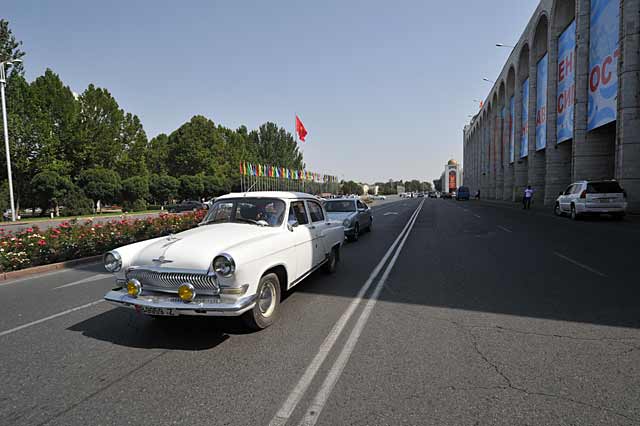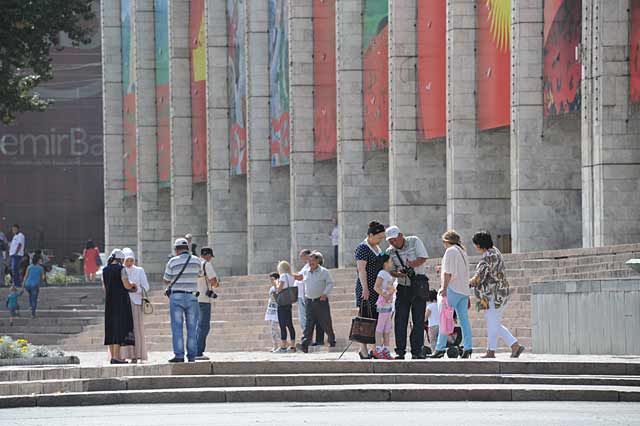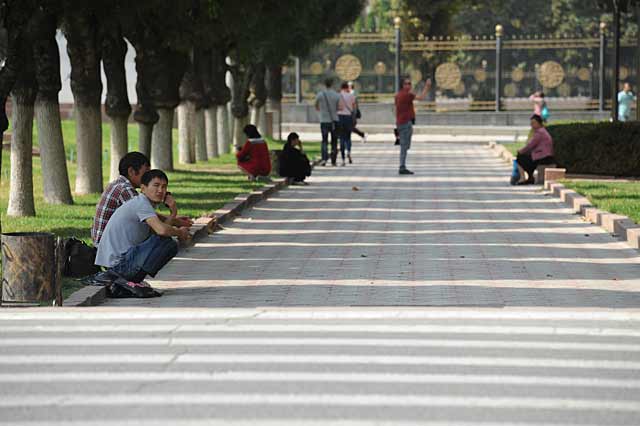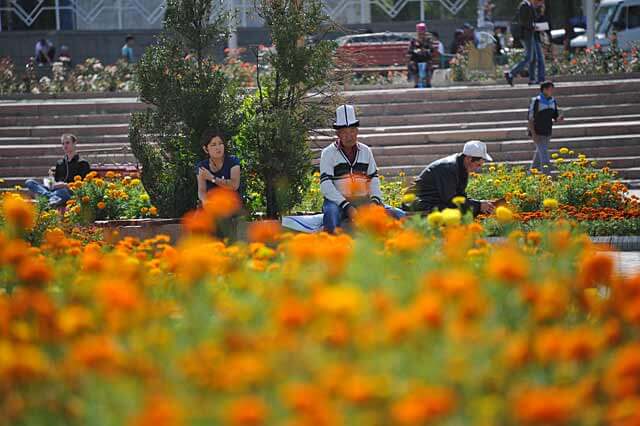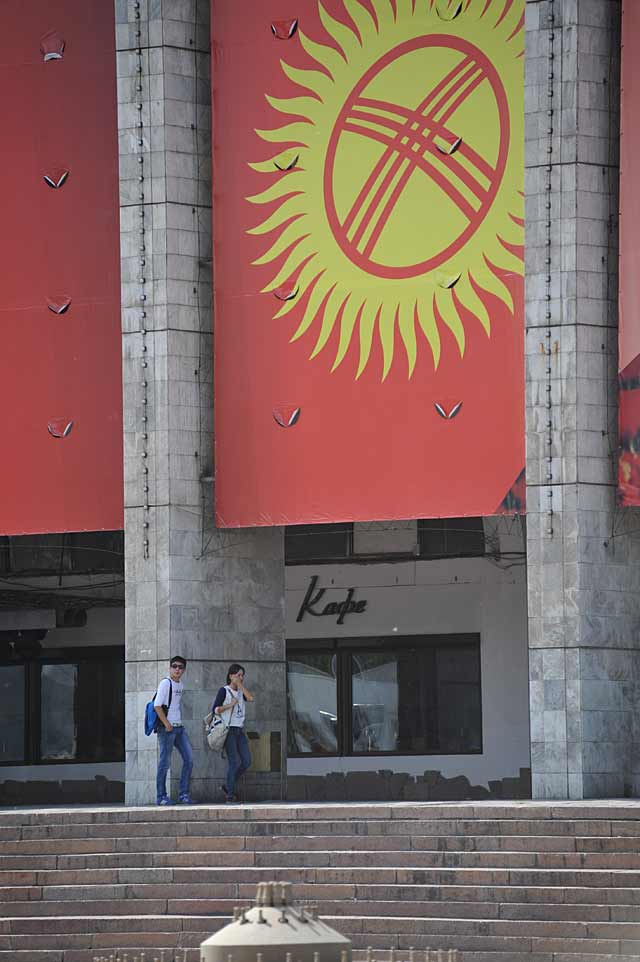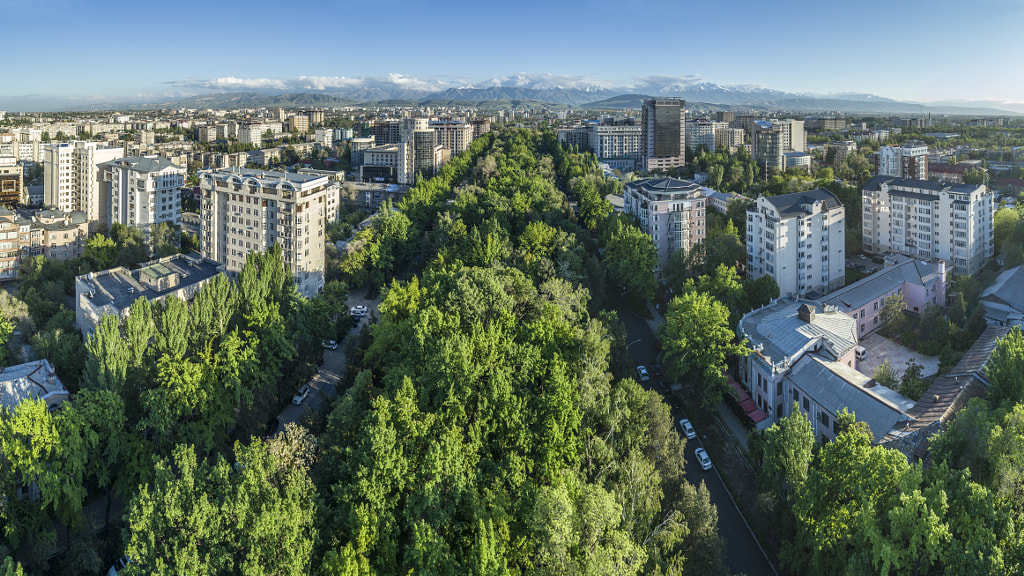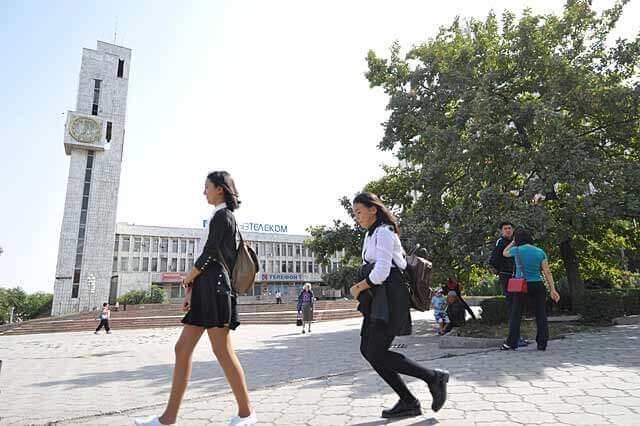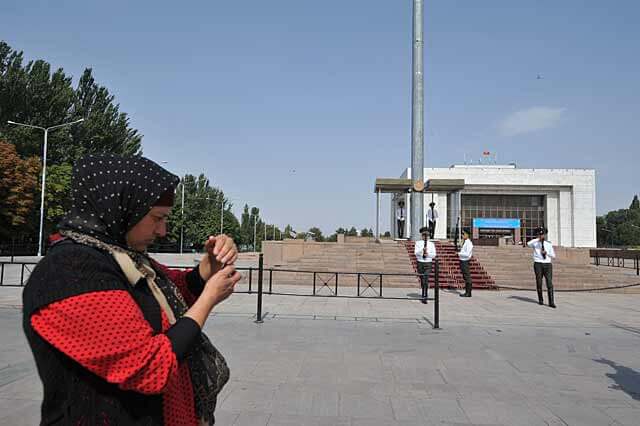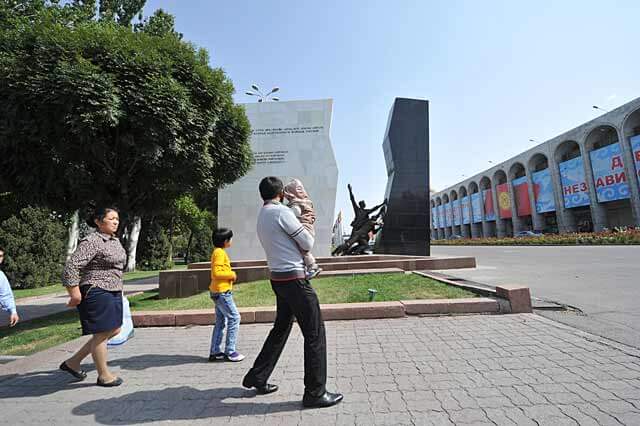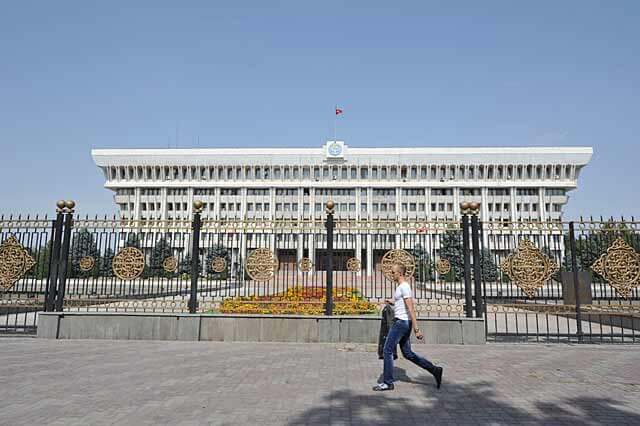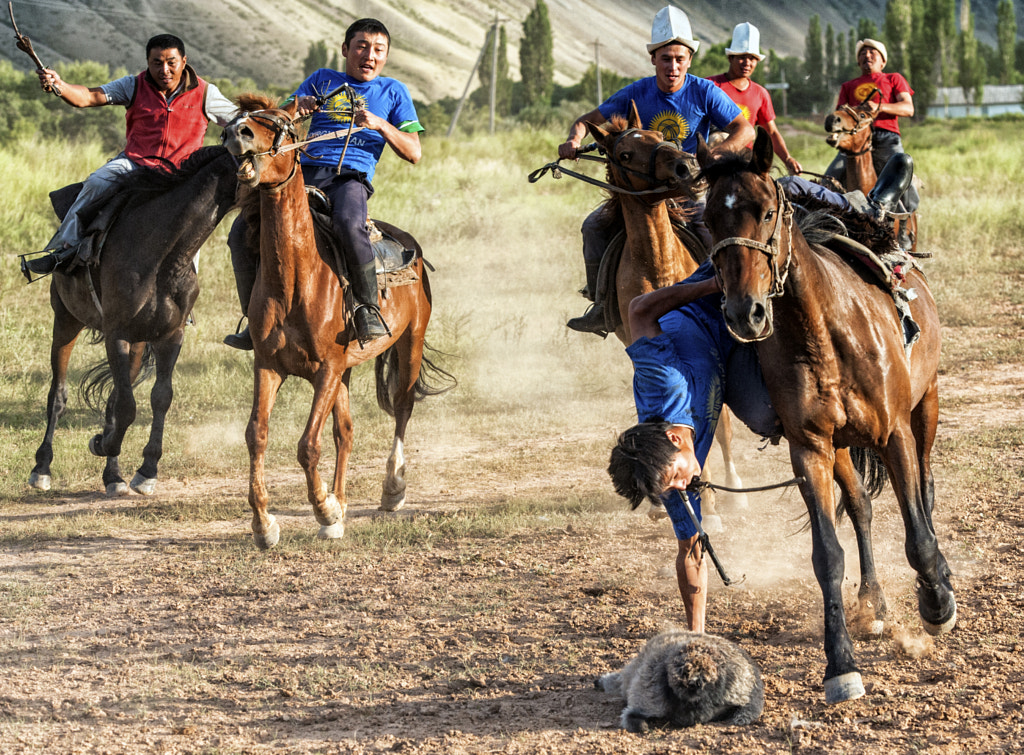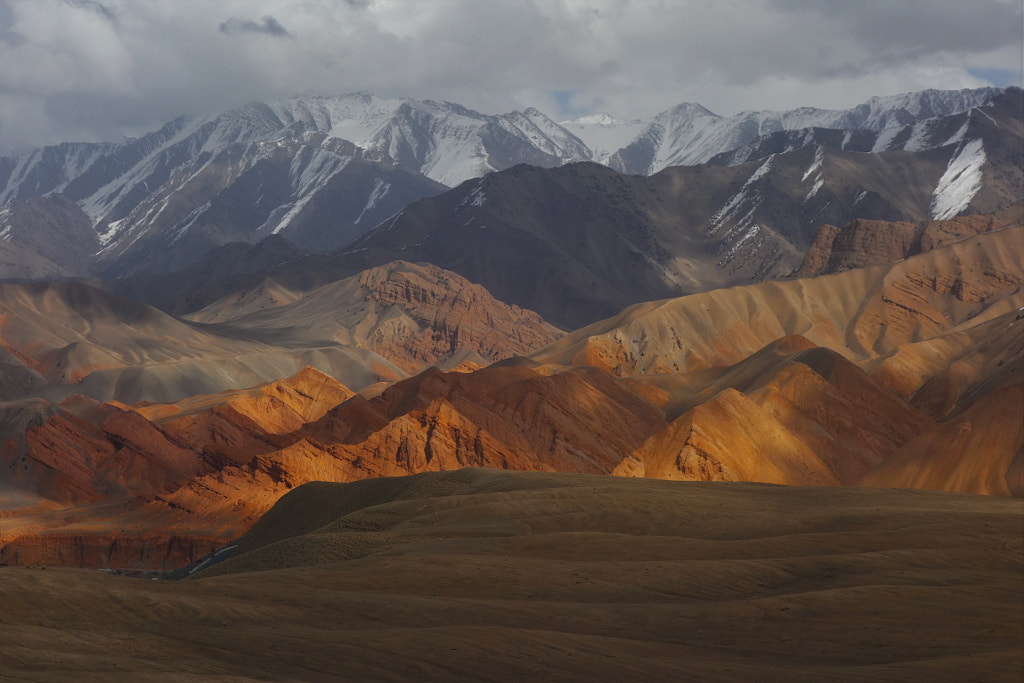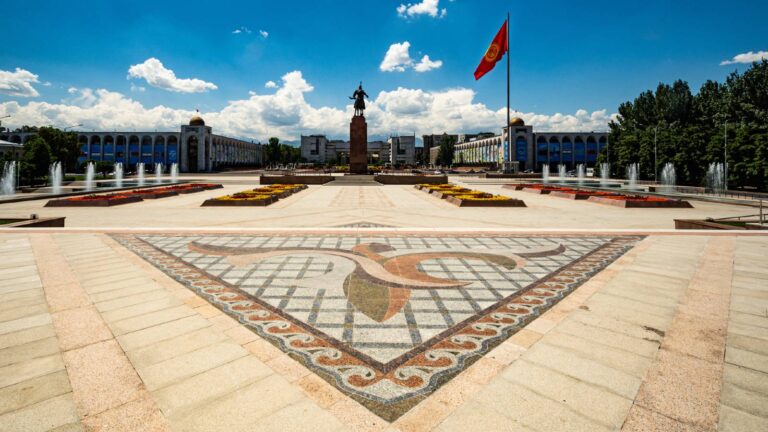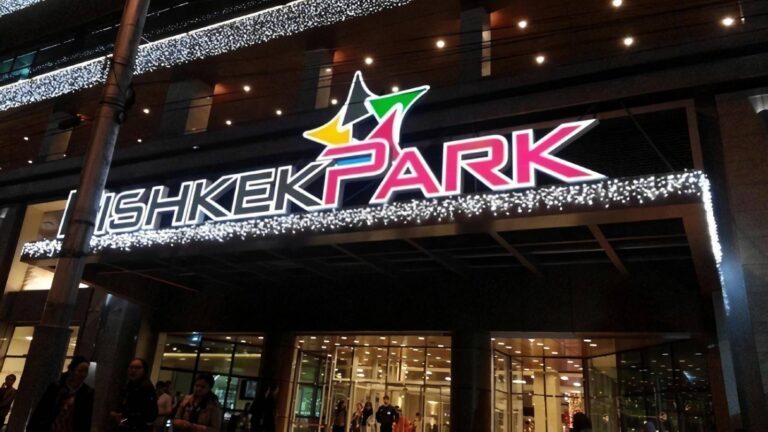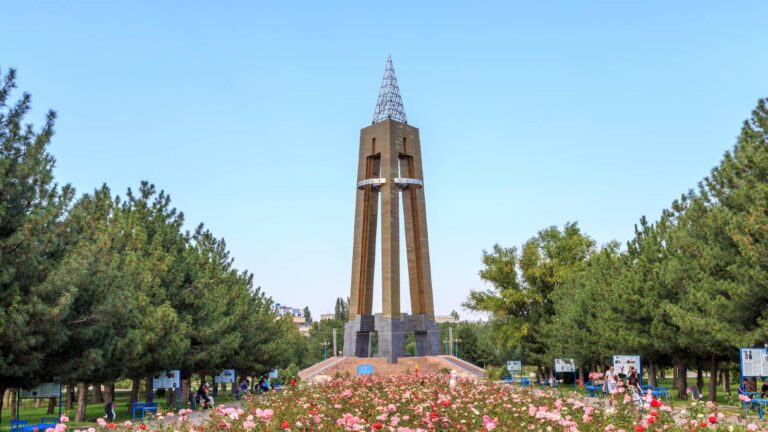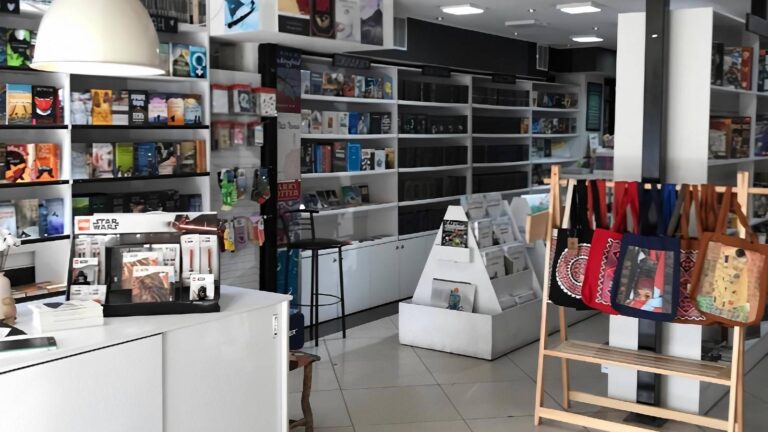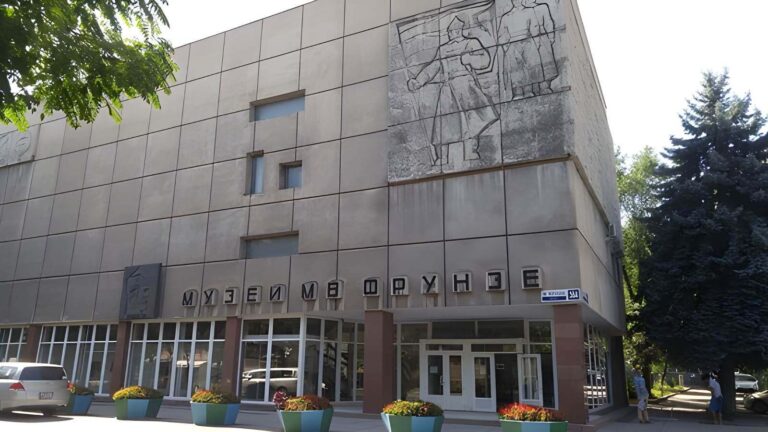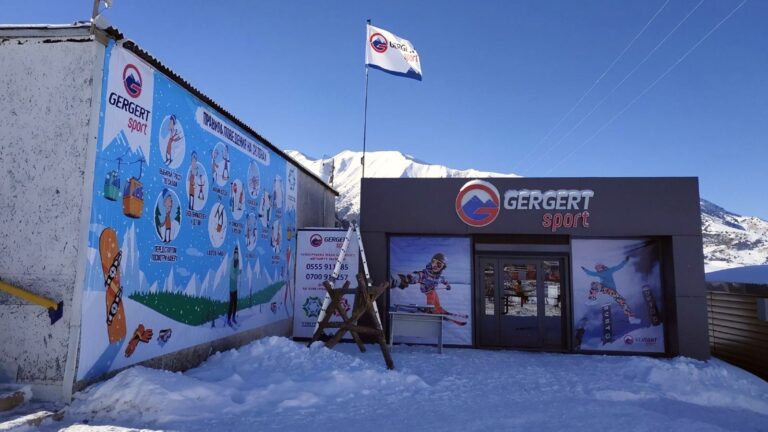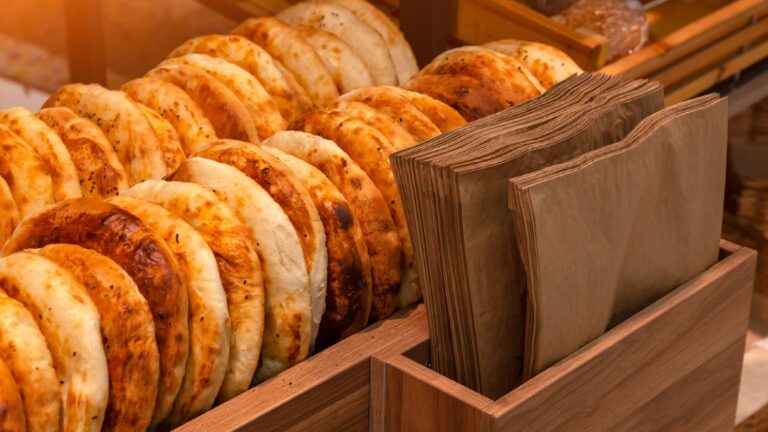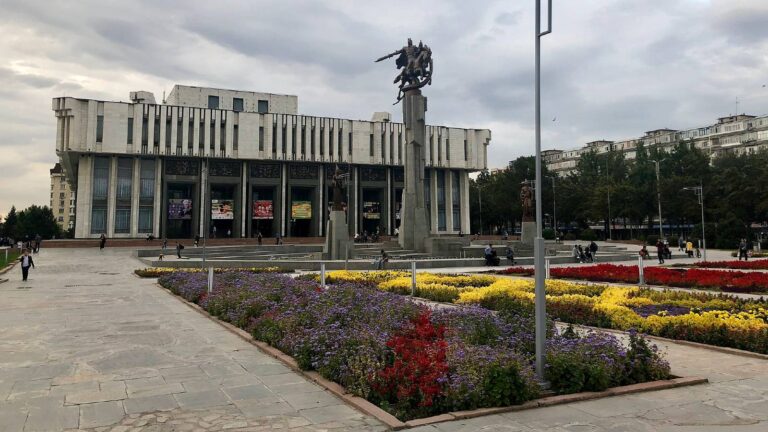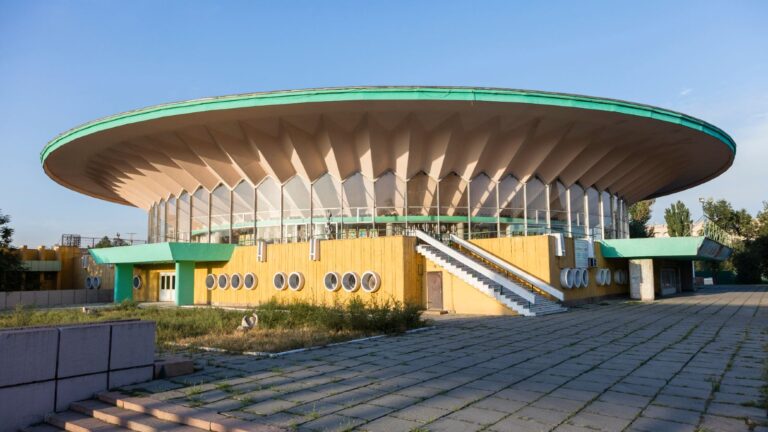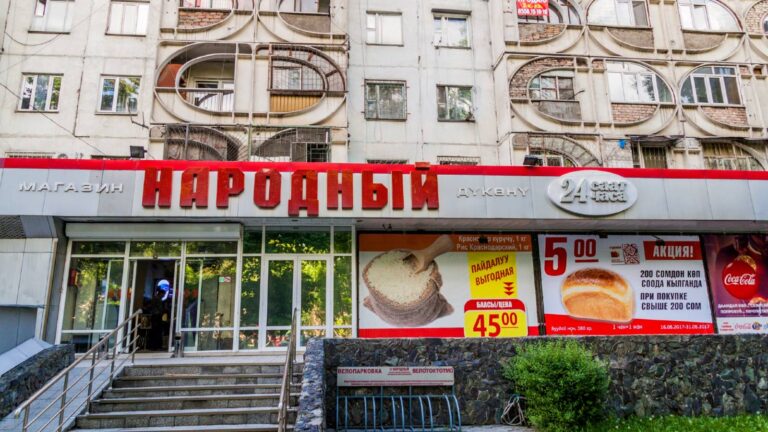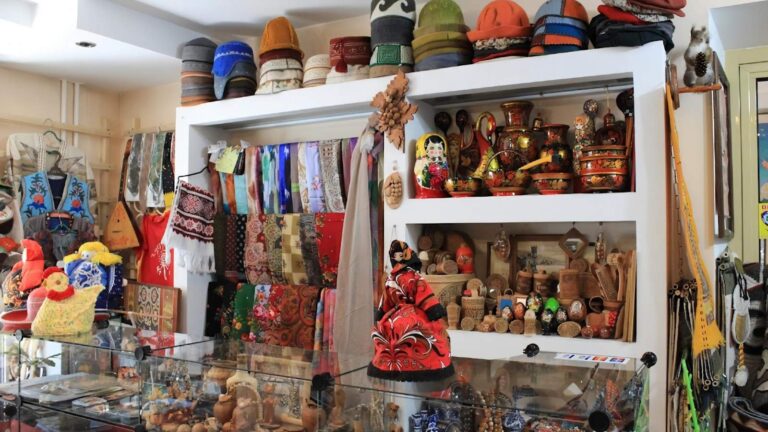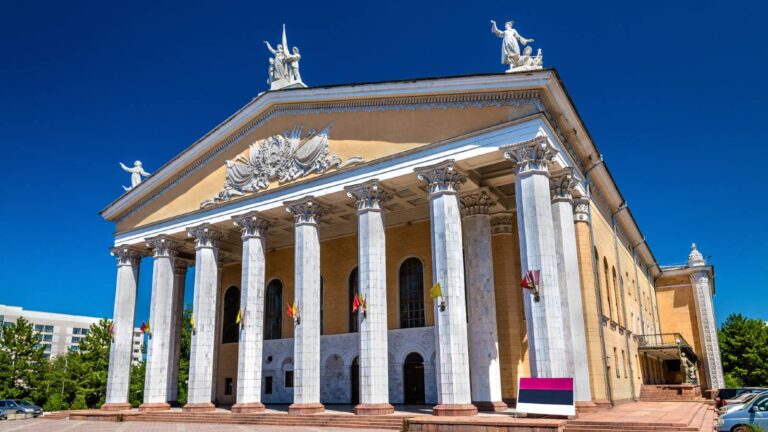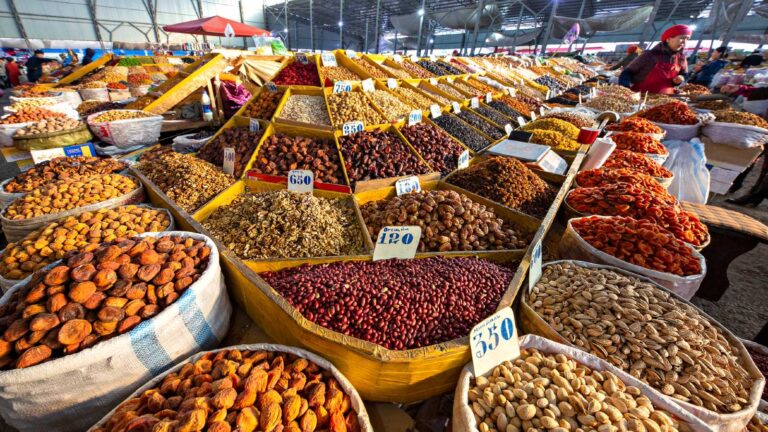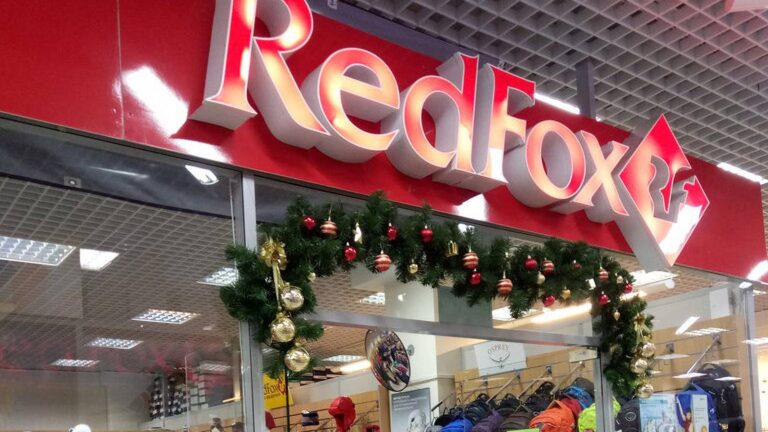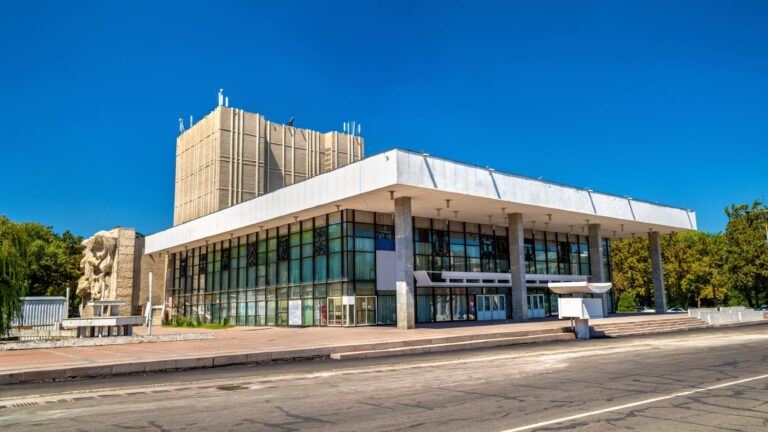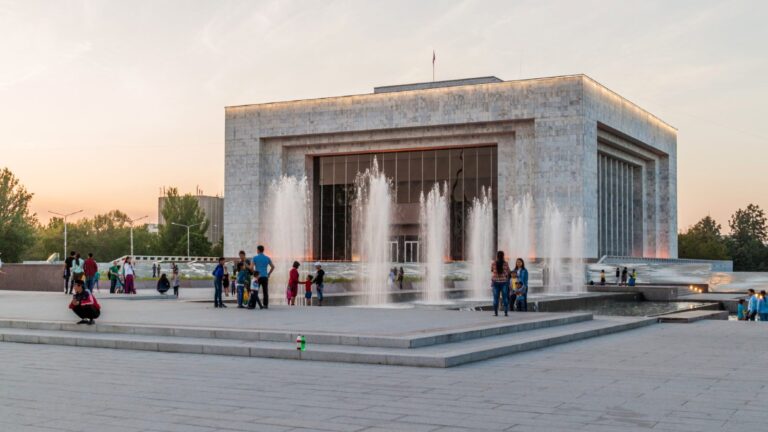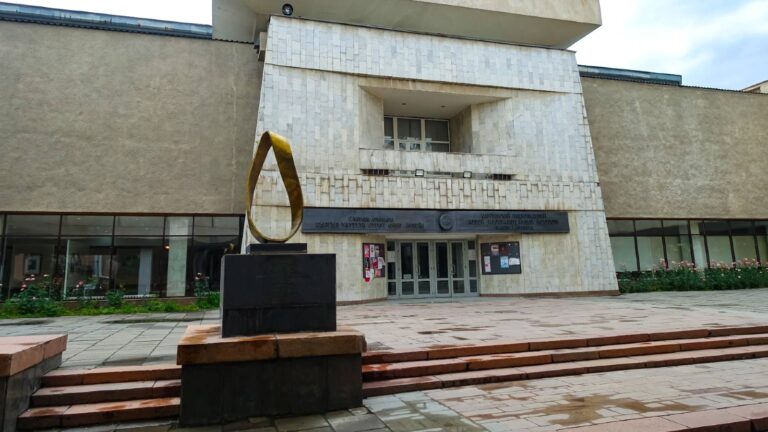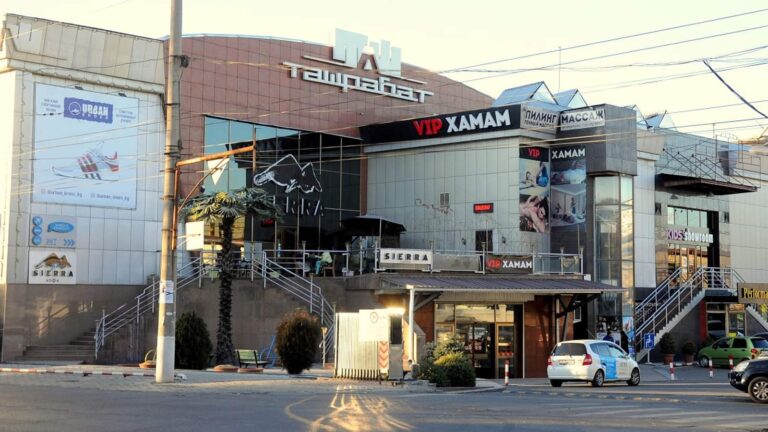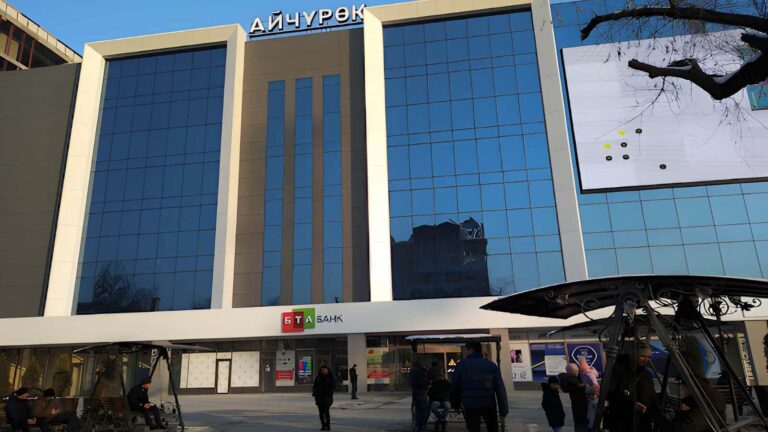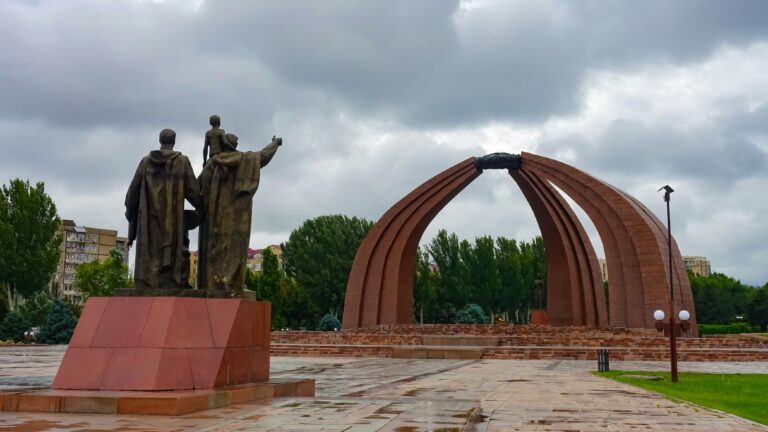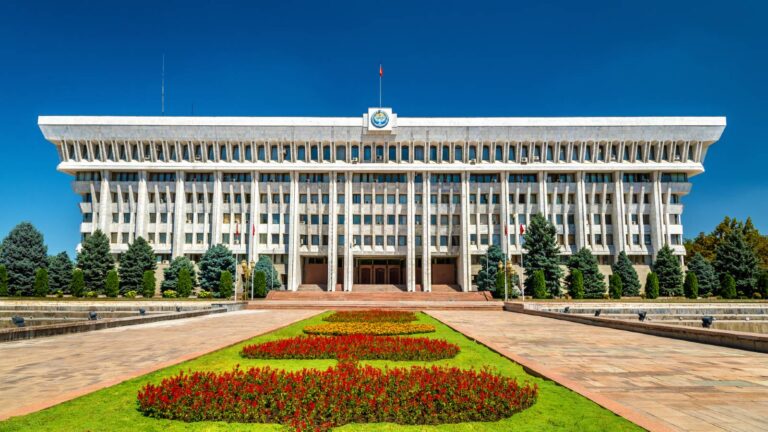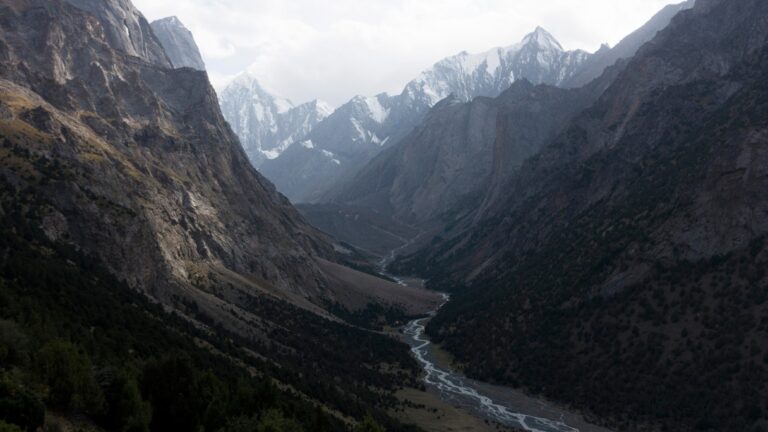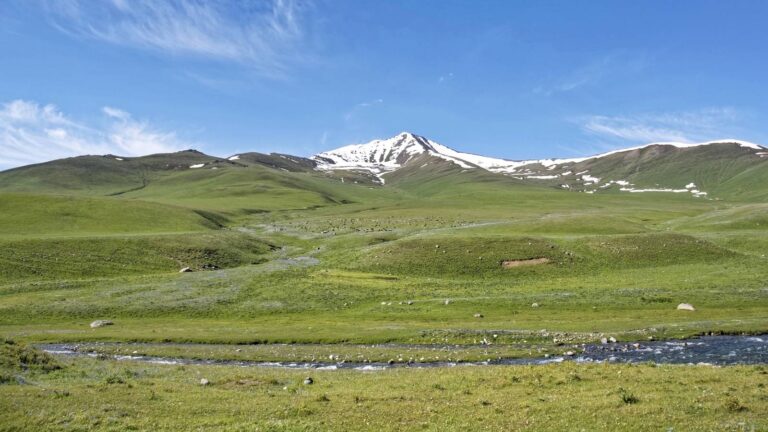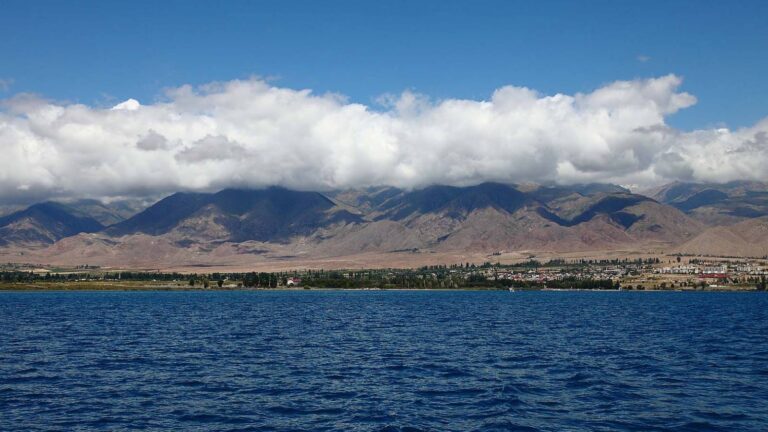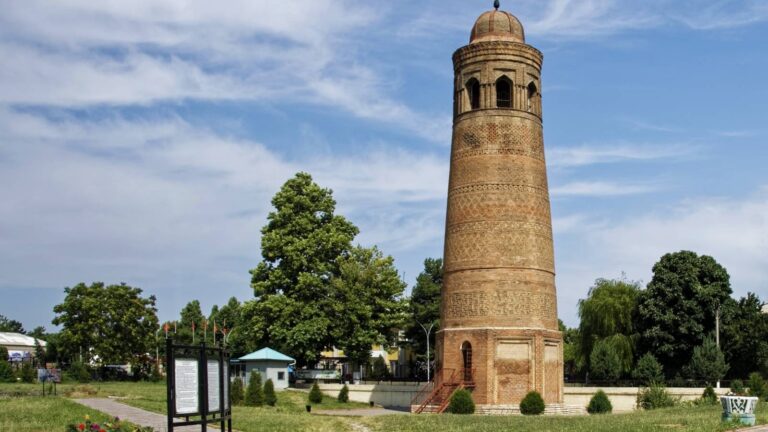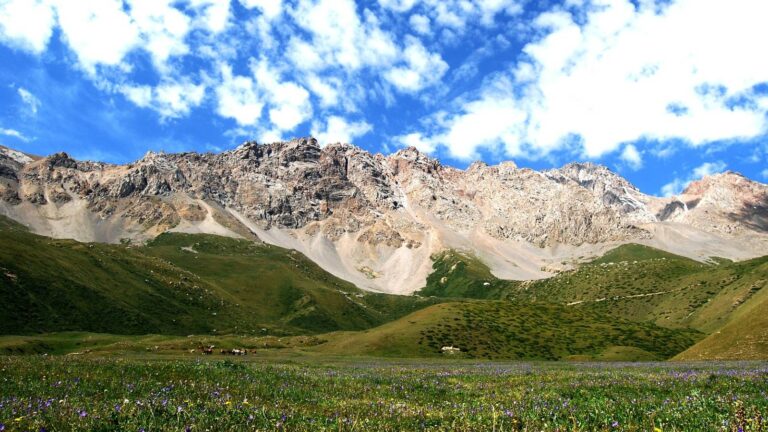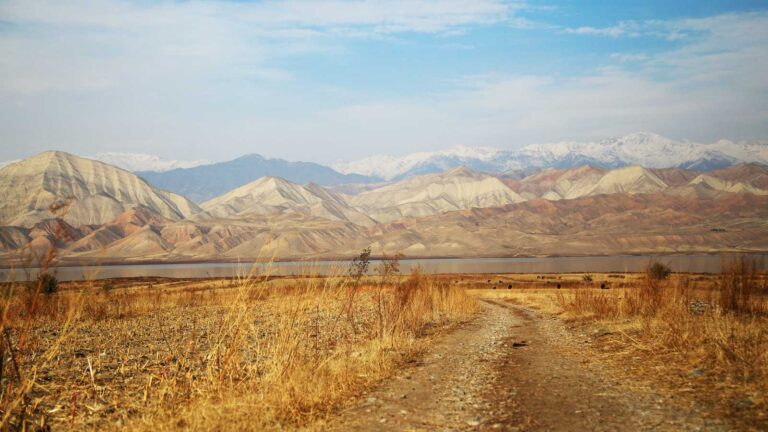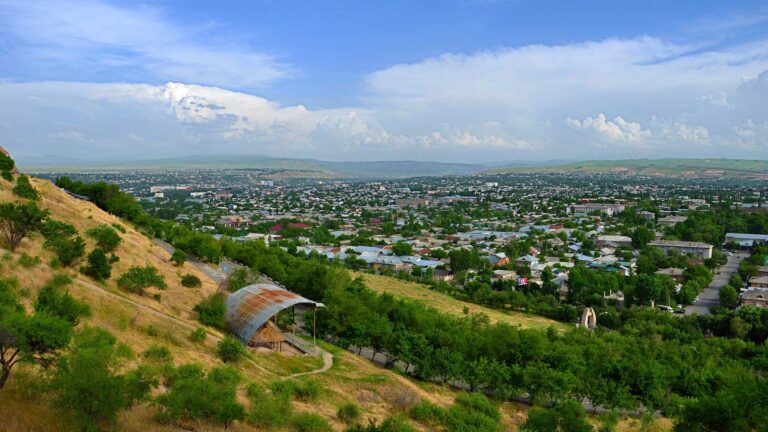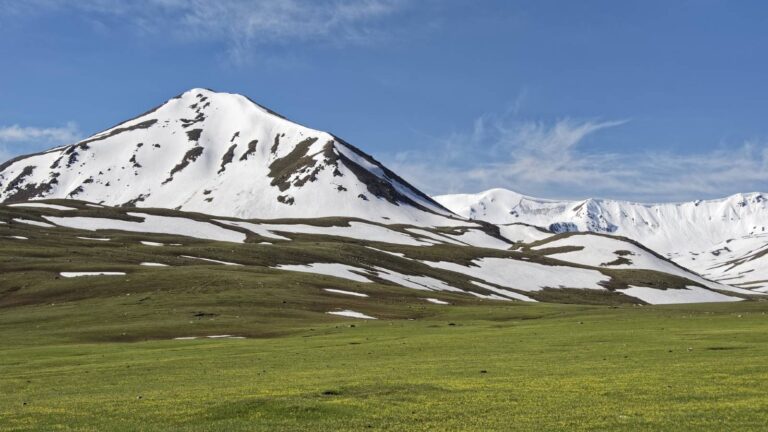You can get directly to the capital of Kyrgyzstan by plane, from the city of Osh on the south or through Kazakhstan – Alma-Ata.
The cost of a flight to Bishkek is about 10,000 rubles per direction, to Osh – 5,000 rubles one way, to Alma-Ata – 12,000 rubles.
You can also get to Bishkek from Almaty by taxi, bus or train.
Modern sights of Bishkek: the central square of Ala-Too and the Parliament building, the State flagpole (changing of the guard every hour from 7:00 to 18:00), the ” Manas” complex, depicting the legendary Kyrgyz hero on a faithful horse, surrounded by his wife and adviser, and the Victory Monument.
Among the museums of the city, the Historical Museum is highly recommended – here you can see numerous ancient artifacts found during excavations: rock paintings of the ancient settlement of Saimaluu-Tash, runic inscriptions of Talas, household items of the Bronze Age, decorations of nomadic tribes and ancient coins.
The ethnographic collections deserve special attention: embroidery and national costumes, richly decorated horse harness, felt and woolen carpets, clay and straw products.
At the Museum of Fine Arts, you can delve into the intricacies of the installation and interior layout of a traditional yurt, see the national carpets “shyrdaks” and other felt products, and enjoy the paintings of Kyrgyz, Uzbek and Russian artists.
The nostalgic for the Soviet era can go to the Frunze Museum and visit the Sculpture Park with an exposition on the theme “Peace and Labor”.
Popular parks in Bishkek: Oak Park and Panfilov Park, Kemal Ataturk Park, Erkindik Avenue, planted with oaks and silvery poplars, Young Guard Boulevard.
Bishkek was founded in 1825 on the ruins of the ancient Pishpek settlement and the Kokand fortress Pishpek which, from the 7th to the 13th centuries, were county trading cities on the caravan route.
After the 13th century, settlements of nomadic Kyrgyz tribes appeared on the sites of the fortress and settlement, which existed until 1825, when the ancient city of Pishpek was revived. At this time, taking advantage of the civil strife among the Kyrgyz, Pishpek conquered the Kokand commander.
The city became the place where the Kokand tax collectors, merchants and artisans settled down. In 1862, during the clashes between Russia and Kokand, the city was conquered by Russian troops.
After the defeat of the Kokand Khanate, the population of Pishpek and the Chui valley voluntarily became part of Russia. Peasants from various Russian provinces began to move to the city and the valley. They shared their farming experience with the locals and built European-style houses.
The rapid development of the city began after 1917. In 1926, in honor of the revolutionary and statesman, Pishpek was renamed Frunze. During the Soviet period, Frunze developed along the lines common to all the allied capitals. Architects and engineers from Moscow and Leningrad took part in the planning of the city. During this time, a significant number of educational institutions, theaters, museums, a philharmonic society, the Central Department Store, and the central city registry office were built on the territory of Frunze.
After Kyrgyzstan became a sovereign country in 1991, the capital was renamed Bishkek. Despite the fact that the decision to change the name of the capital was made relatively recently, no one knows a clear interpretation of the name Bishkek.
Some sources say that the city is named after a special wooden spoon for making koumiss in the ancient way – a symbol of the ancient nomadic Kyrgyz, other sources say that the capital is named after one of the forty most courageous and brave warriors of Manas.
Festivals in Kyrgyzstan reflect the rich history and nomadic traditions of the Kyrgyz people. This is a celebration of centuries-old culture with traditional sports competitions, various fairs and performances.
Today, festivals in Kyrgyzstan are the best way to preserve ancient traditions, holidays that bring together not only people from all over the country, but also guests from all over the world. The most popular festivals are those dedicated to crafts, cuisine, folklore, felting, hunting with birds, and horse games. Many Kyrgyz festivals are held on summer pastures (jailoo), where entire yurt camps are set up.
Festivals in Kyrgyzstan are one of the best places for those who want to feel the Kyrgyz traditions and customs.
The city is located in the very center of the Chui valley, at the foot of the snow-white mountains of the Kyrgyz Ala-Too, at an altitude of 750 m above sea level. The area of the territory is 160 sq. km.
The climate in Bishkek is sharply continental, the average annual air temperature is 10.2 C. The most the coldest month is January (-24.7 C), the warmest is July (34.5 C).
Bishkek is the economic center of the country. All branches of industrial production are represented in the city. Among them, the main ones are: mechanical engineering and metalworking, light and food industries and energy.
Large industrial enterprises in Bishkek include: Bishkek Thermal Power Plant, Dastan Corporation, Coca-Cola Bishkek Bottlers, Bishkek Danazyk; joint-stock companies: Bishkeksyut, Bishkek Machine-Building Plant, Kyrgyzavtomash, Bishkek reinforced concrete plant, Bulgary, Zhyldyz, Baipak association enterprises, and others.The city of Bishkek is a regional center of trade and a hub between China, Kazakhstan and Russia.
Bishkek has the largest wholesale and retail market in Central Asia, Dordoi, the largest car market, Azamat, and a number of other markets: Osh (market), Alamedin (market), Orto-Sai (market), Ala-Archa – 2″ (market), “Narboto”, “Kudaibergen” and others.
There are also large shopping centers: “Vefa”, “Biskek Park”, “Dordoi-plaza”, “Tash-Rabat”, “TsUM-Aichurek ”, “TSEC Vesna” (former “SEC Rakhat Palace”), “Caravan”, “Children’s World”, “Tabylga”, “MOTO”, “BETA STORES”, “BETA STORES 2”.
The city has offices of large international companies such as Mercedes-Benz, Audi-VW, Sumitomo, Federal Express, DHL, UPS, LG-Electronics, Daewoo, Philips, Siemens, Panasonic, Reemtsma, Coca-Cola, Samsung, Toyota, Kia, etc.

